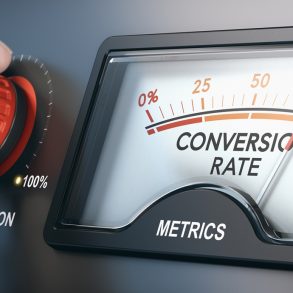 When prime rate starts climbing, so will the payments of most variable-rate mortgage holders.
When prime rate starts climbing, so will the payments of most variable-rate mortgage holders.
Some people’s variable-rate payments will climb faster than others. That’s because some lenders pass along rate increases quicker than others.
(Note: Things work a little differently for people with fixed-payment variable-rate mortgages. See below.)
Most lenders pass along rate increases as soon as prime rate changes, or on the first day of the following month. Others give you more time. ING Direct, for example, only changes its variable rate (for existing customers) every three months. The date of change is based on the borrower’s interest adjustment date. In a rising rate environment, this policy definitely saves some interest.
To see how much interest, we ran a quick scenario. It compared ING’s rate adjustment policy to the common lender policy of raising variable rates as soon as prime rate increases.
The scenario assumed a $250,000 mortgage, 25-year amortization, 5-year term, a June 1 closing date, and a 2.75% prime rate increase (in 25 bps increments following each BoC meeting).
The results were that ING’s variable saved roughly $540 in interest over the term. That’s equivalent to saving about five basis points off the interest rate–assuming that rates do rise 2.75% and then average out to no increase/decrease for the remainder of the term.
Mind you, when prime rate eventually falls, this interest effect works in reverse. Yet, given today’s emergency-level 0.25% overnight rate, many would argue that the odds are greater of rates increasing in the next five years than decreasing.
In a nutshell, if you’re getting a variable mortgage today, it’s worth keeping the lender’s rate adjustment policy in mind.
_____________________________________________________
Sidebar: Some variable-rate mortgages offer a “fixed payment” option. In this case, as rates go up, the payment stays the same, but you pay more interest and less principal. The exception is when rates increase so much that you aren’t paying enough interest each month. In that case, the lender will typically raise your payment or require extra payment to cover the interest due.







Hi, It seems like I learn something new here every day. Is ING the only bank that waits that long to rise your rate?
Thank you!
Do any lenders provide fixed payment variables available for CMHC / Genworth insured mortgages.
Hi Linda,
I can’t think of any other lenders that wait 3-months to pass along prime rate increases. However, there may well be a few smaller lenders that do. Perhaps others can post if they know of any.
Hi ComputerGuy,
There’s a fair number of lenders that do have “fixed payment” variables. Examples include: FirstLine, Laurentian, RBC, TD, BMO and various credit unions. Just keep in mind that fixed payments on variable-rate mortgages are often not guaranteed to remain fixed if rates go up a lot. That’s because lenders generally require you to at least cover the interest due each month.
Cheers,
Rob
Linda,
Just to clarify, ING makes rate change adjustments every 3 months based on your first mortgage payment. In our case, our next adjustment date takes place on May 29th. Luckily for us, the next expected Bank of Canada rate change is on June 2nd or later. This means that for June, July and August we will be able to maintain our current interest rate whether an increase takes place or not.
It is entirely possible that someone could have a rate change adjustment scheduled for June 10th and if the Bank of Canada increases rates on June 2nd, they will pay the increased amount on their following payment. Still, having a 3 month window of exact payments is a feature that we thought would be useful for our budgeting(despite some negative impact in the early going since rates were dropping).
I’m pretty sure ING bases the 3 months on the interest adjustment date, not the first payment date.
Pete,
Either what I said wasn’t very clear or you misunderstood what I was trying to say. Since I’m not sure which is the case, I’ll assume both and respond accordingly. :)
ING makes interest rate adjustments every 3 months starting from your first payment date. In other words, if you bought your house on May 10th, ING will make rate adjustments every year on May 10th, August 10th, November 10th and February 10th.
Since these are the only times they adjust your interest rate, you will always know what the payments will be for 3 consecutive months:
After the February 10th adjustment, you will have a fixed payment for the months of March, April and May. After the May adjustment, you will have a fixed payment for the months of June, July and August. And so on…
So, all I was aiming to say in my post above is that if the Bank of Canada increases the prime rate on June 2nd, there are some who will be lucky and others who won’t be as lucky.
In the first scenario where a person has an interest adjustment on May 29th, their next adjustment date won’t be until August 29th so they will have a fixed payment for the months of June, July and August that will be based on the prime rate on May 29th.
In the second scenario, I once again assume that the Bank of Canada increases the prime rate on June 2nd but the home owner has an interest adjustment that takes place on June 10th. For this mortgage, the payments for the months of July, August and September will increase based on the prime rate on June 10th which will have increased to the new level given on June 2nd.
Hopefully this clarifies ING’s interest adjustment process for those who might be interested in their product. I was quite happy with this feature despite the negative impact early on which resulted from our adjustment dates taking place just prior to the rate dropping. However, with rates on the rise, we now benefit from our adjustment date taking place just prior to an increase so it will probably level out in our situation.
I don’ think this is going to be much of an issue because I don’t think there are goingto be too many increases in the prime. Between What it will do to the dollar and and I thinkthe economy is also proped up by the low rates, thinks are not as good as they seem.
How many increases in prime do you think there will be?
Remember. Our 0.25% overnight rate in unnaturally low and the Bank of Canada cares a lot more about inflation than the dollar.
i like inflatioon